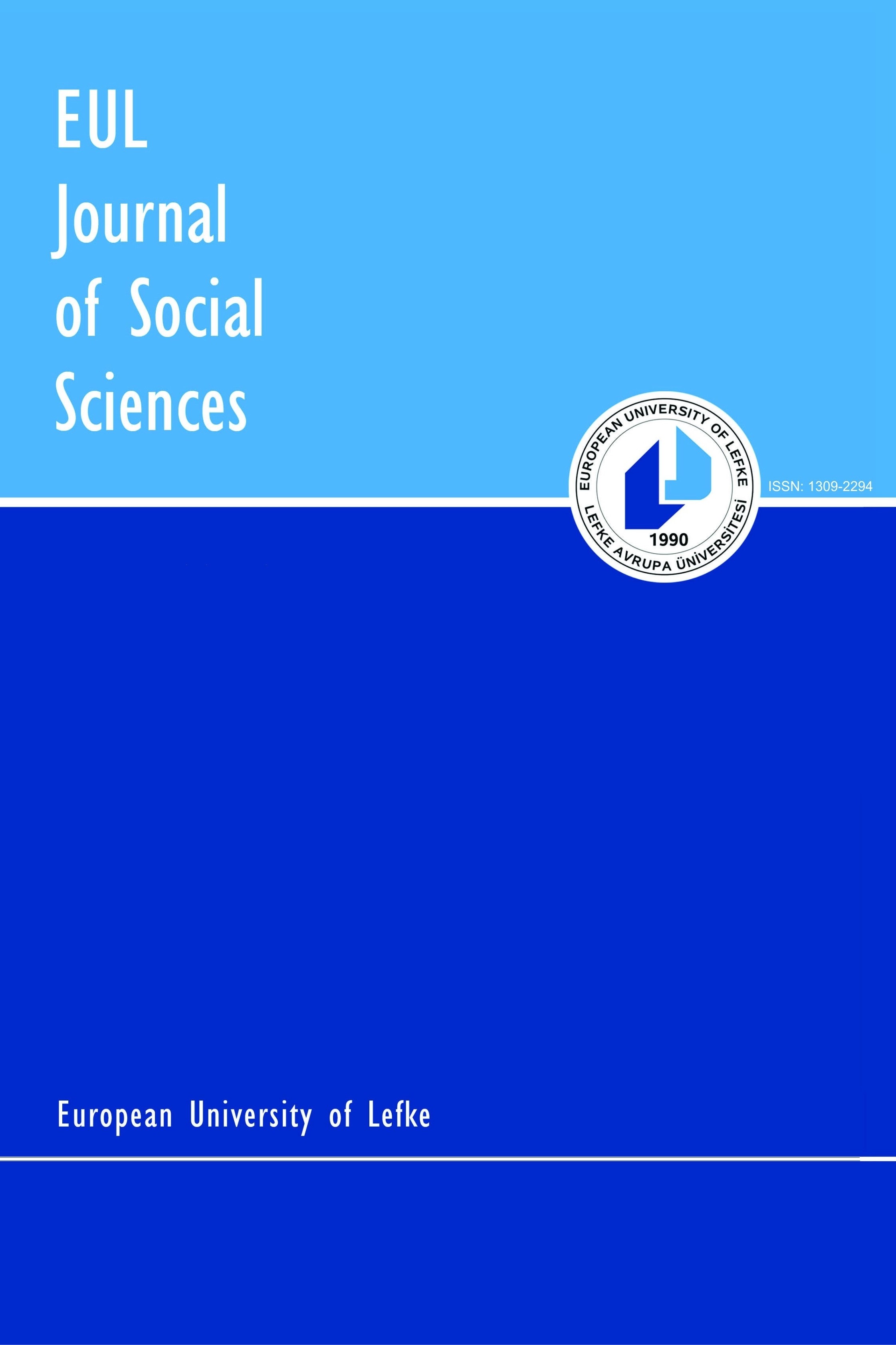The Impact of International Aid on Economic Growth of Afghanistan
Anahtar Kelimeler:
foreign aid, official development assistance
The Impact of International Aid on Economic Growth of Afghanistan
Abstract: Although foreign countries and international organizations have provided 73 billion dollars to this day and Afghanistan has plentiful natural resources, Afghanistan is still one of the impoverished countries in the world. This fact leads to a question: Does foreign aid boost Afghanistan’s economic development? This paper aims to examine the impact of Official Development Assistance (ODA) on the Gross Domestic Products (GDP) of Afghanistan to find out whether ODA has led to economic growth in Afghanistan or not? We have analyzed the impact of international aids on the real GDP of Afghanistan by using Johansen’s Cointegration test and Fully Modified Least Squares (FMOLS) model with data from 1984 to 2017 for 34 years. The result has revealed that official development assistance has a positive long-run impact on GDP of Afghanistan, as one percentage change in ODA leads to an increase of 0.32% in GDP in the long run.
Keywords:
official development assistance, foreign aid, international aid economic development, Afghanistan,
___
- Adebayo, T., Awosusi, A. A., and Ajayi, T. (2020), “Dynamic Aid-Growth Relationship in Nigeria: A Two-Gap Approach”, LAÜ Sosyal Bilimler Dergisi, (XI-I): 1-17. Ali, A., Malwanda, C. and Suliman, Y. (1999), “Official Development Assistance to Africa: An Overview”, Journal of African Economies, 8(4): 504–527.
- Bacha, E. L. (1990), “A Three-gap Model of Foreign Transfers and the GDP Growth Rate in Developing Countries”, Journal of Development Economics, 32: 279-296. BBC, T. F. (2014), “US Assistance to Afghanistan Has Been Greater than Helping Rebuild Post-war Europe”, https://www.bbc.com/persian/afghanistan/2014/08/ 140801_k05_sigar_afghan_us_aid_more_than_marsha_plan_budget, Retrieved: 10.01.2020.
- Beenstock, M. (2002), “Political Econometry of Official Development Assistance”. World Development, 137-144.
- Boone, P. (1995), “Politics and the Effectiveness of Foreign Aid”. NBER Working Paper No. 5308, National Bureau of Economic Research, Inc.
- Chenery, H. B. and Stout, A. (1966), “Foreign Assistance and Economic Development”, American Economic Review, 55: 679-733.
- Cooper, R. (2018), Aid Dependency and Political Settlements in Afghanistan. Birmingham, U.K.: University of Birmingham.
- Counrty Economy (2020), Afghanistan GDP, https://countryeconomy.com/gdp/ Afghanistan, Retrieved: 10.08.2020. Development Initiatives (2012), Official Development Assistance: An Essential Guide. UK: Development Initiatives, www.oecd.org/dataoecd/21/21/34086975.pdf, Retrieved: 10.08.2020.
- Ekanayake, E. M. and Chatrna, D. (2010), “The Effect of Foreign Aid on Economic Growth in Developing Countries”, Journal of International Business and Cultural Studies, 1-13. Fayez, H. (2012), “The Role of Foreign Aid in Afghanistan’s Reconstruction”. Economic & Political Weekly, 47(39), https://www.epw.in/journal/2012/39/notes/ role-foreign-aid-afghanistans-reconstruction.html, Retrieved: 15.07.2020.
- Feasel, E. (2013), “Official Development Assistance (ODA) and Conflict: A Case Study on Japanese ODA to Vietnam”. In: W. Ascher and N. Mirovitskaya (eds.), Development Strategies, Identities, and Conflict in Asia. New York: Palgrave Macmillan
- Gitaru, K. (2015), “Impact of Foreign Aid on Economic Growth of Kenya”, Munich Personal RePEc Archive. https://mpra.ub.uni-muenchen.de/68145/ 1/MPRA_paper_68145.pdf, Retrieved: 27.01.2020.
- Hansen, H. and Tarp, F. (2001), “Aid and Growth Regressions”, Journal of Development Economics, 64(2): 547-570.
- Humayoon, K. (2015), “The Effectiveness of Foreign Aid on Afghanistan Development: Is There Any Lesson Kabul Can Learn from the Korean Experience?”, Master of Public Policy in International Development (MPP/ID) Report, https://www.researchgate.net/publication/328353080_the_effectiveness_of_foreign_aid_on_afghanistan_development_is_there_any_lesson_kabul_can_learn_from_the_korean_experience, Retrieved: 05.07.2020.
- IMF (2018), World Economic Outlook Database, NY: IMF.
- Jalalzai, M. (2013, 2 26), درصد کمک های مالی به افغانستان از کشور خارج شده است, (80% of donations to Afghanistan have been withdrawn from Afghanistan). https://www.dw.com/fa-af/, Retrieved: 10.08.2020.
- Kaur, N. and Sitlhou, L. (2017), “Governance of Development Assistance: Issues and Challenges”, Indian Journal of Public Administration, 63(2): 252–264.
- Mallik, G. (2008), “Foreign Aid and Economic Growth: A Cointegration Analysis of the Six Poorest African Countries”, Economic Analysis & Policy, 38(2): 251-260.
- Minoiu, C. and Reddy, S. G. (2009), “Development Aid and Economic Growth: A Positive Long-run Relation”, The Quarterly Review of Economics and Finance, 50(1): 27-39. Moreira, S. B. (2005), “Evaluating the Impact of Foreign Aid on Economic Growth: A Cross-Country Study”, Journal of Economic Development, 30(2): 25-49.
- Moss, T. J. (2006), “An Aid-Institutions Paradox? A Review Essay on Aid Dependency and State-Building in Sub-Saharan Africa”, Center for Global Development Working Paper, No: 74. https://www.cgdev.org/sites/ default/files/5646_file_WP_74.pdf, Retrieved: 10.08.2020.
- OECD (2019), “Official Development Assistance”, https://www.oecd.org/dac/financing-sustainable-development/development-finance-standards/official-development-assistance.htm#:~:text=ODA%202019%20 preliminary%20data&text=ODA%20from%20members%20of%20the,collected%20from%20official%20development%20agencies, Retrieved: 10.08.2020
- Patel, P., Roberts, B., Conteh, L., Guy, S., and Lee-Jones, L. (2010), “A Review of Global Mechanisms for Tracking Official Development Assistance for Health in Countries Affected by Armed Conflict”, Health Policy, (100:2-3): 116-124.
- Siddique, H. M., Kiani, A. K., and Batool, S. (2017), “The Impact of Foreign Aid on Economic Growth: Evidence from a Panel of Selected Countries”. International Journal of Economics and Empirical Research, 5(1): 34-37.
- SIGAR (2015), Quarterly Report to the United States Congress, Kabul, Afghanistan: SIGAR, https://reliefweb.int/sites/reliefweb.int/files/resources/2015-07-30qr.pdf, Retrieved: 10.08.2020.
- Taylor, L. (1990), “A Three-Gap Model”. In: F. D. McCarthy (ed.) Problems of Developing Countries in the 1990s. Washington, D.C.: World Bank 55–90.
- ISSN: 1309-2294
- Yayın Aralığı: Yılda 2 Sayı
- Başlangıç: 2010
- Yayıncı: Lefke Avrupa Üniversitesi
